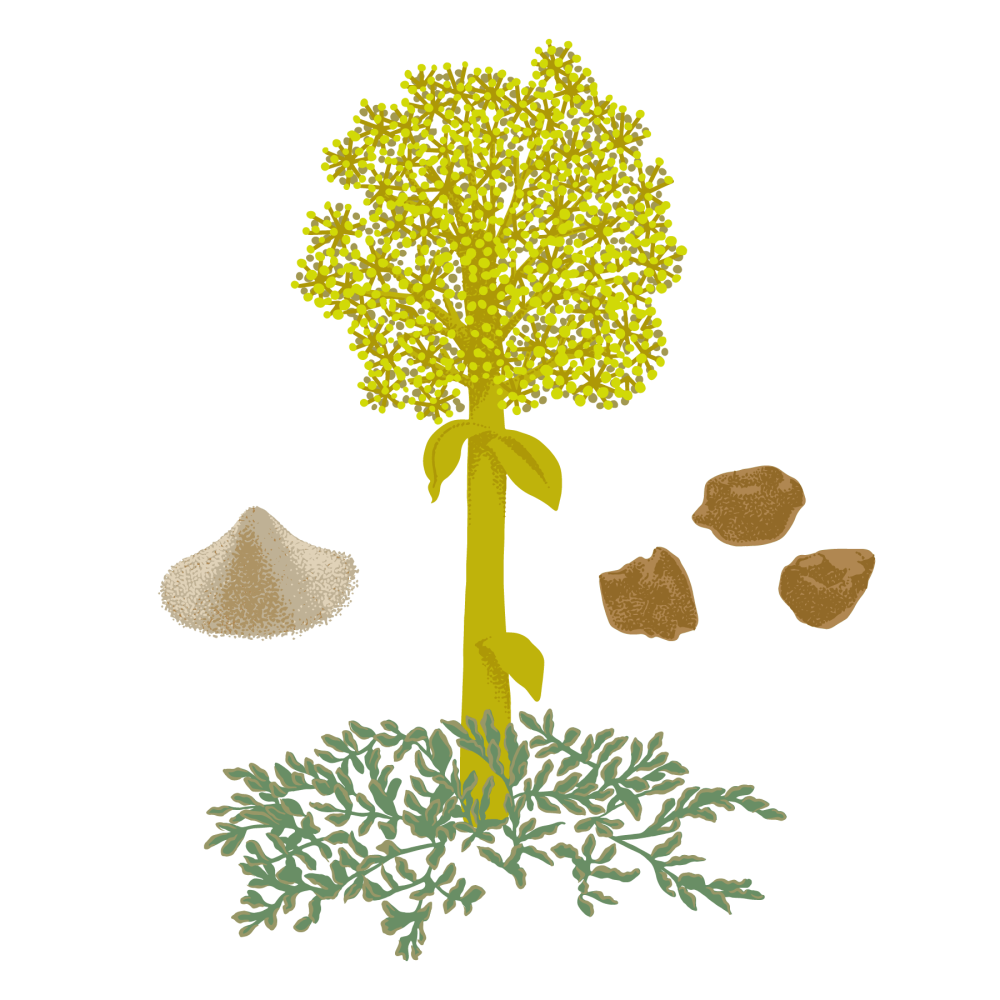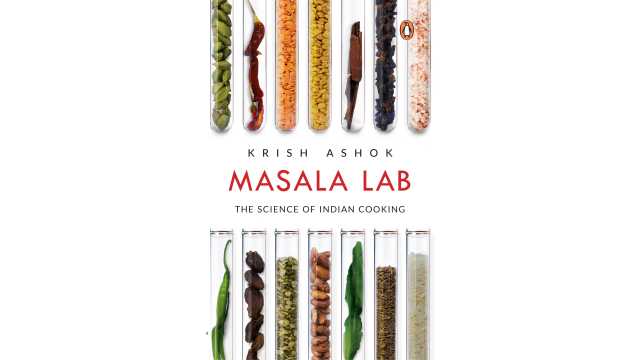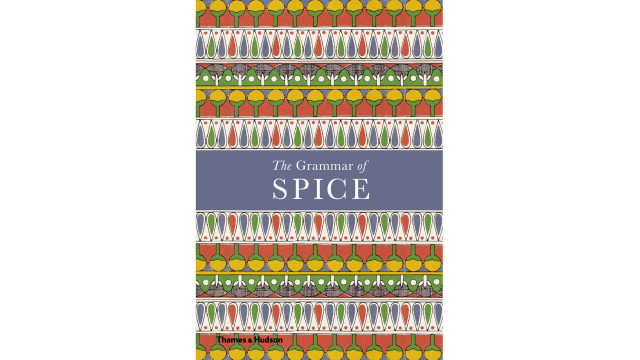Asafetida

Latin name: Ferula asafoetida
Other names: hing, perungayam, devil’s dung (in French, German, Turkish)
Uses: spice, medicinal
What is asafetida?
This pungent resin is harvested from the carrot-shaped roots of a plant native to Central Asia. After being mixed with flour and edible gum, asafetida is sold either in the form of ochre rock salt-like chunks or as a fine, pale-yellow powder used as a spice. The first thing you notice about asafetida is its smell. What's it like? Well, in many European languages the spice is called “Devil’s dung;” that should give you an idea.
Why is asafetida healthy?
Asafetida has been used in Indian kitchens for thousands of years to mitigate the bloat and flatulence that dahls and other fibrous vegetarian dishes commonly cause. Rich in antioxidant and anti-inflammatory properties, it is also traditionally used to treat menstrual issues, diabetes, headaches, and asthma.
What does asafetida taste like?
Sulphur compounds like those in onions and garlic make asafetida bitter and acrid, with a strong, pungently alliaceous odor. But once the spice meets hot oil, it transforms. Just a pinch packs a punch of umami and can infuse an entire dish with a mellow, lingering aroma like that of sautéed onions, leeks, and garlic.
How do I use asafetida?
Take a pinch and fry it quickly in hot oil or ghee before you add additonal ingredients. In some regional Indian kitchens, asafetida is used to season food in lieu of onions and garlic. The spice is added to all gassy foods like lentils (dals and sambhar), beans, cabbage, and potatoes for its digestive benefits.
What does asafetida pair well with?
Include it in recipes, with or without alliums, for a full-bodied, savory flavor. Use a little to enhance mushroom and vegetable dishes or spice up fried or barbecued meat for a unique flavor. Or just rub a tiny amount on a warmed plate before serving meat on it, as they do in Iran.
Where does asafetida grow?
A member of the carrot family, asafetida thrives in cold desert regions and grows wild in Iran and Afghanistan. Kandhari asafetida is considered the best, while the Iranian resin is milder in flavor with citrusy undertones. Almost the entire crop makes its way to India where it is used to flavor everything from fried breads to vegetables and lentil curries. So far, the plants have never been successfully domesticated, so the resin must be gathered in the wild.
How to buy asafetida:
If you can find it in lumps, by all means buy some and grate off a bit as needed. Generally it's sold as a powder in small jars; keep it in your spice cabinet for up to a year.
Fun asafetida fact:
Asafetida was used in ancient Roman and Greek cuisines, but by the 16th century its use had almost entirely ceased. Today, the spice remains virtually unused in the West except possibly in Worcestershire sauce, which happens to be a recipe from a British officer who returned from colonial India.




